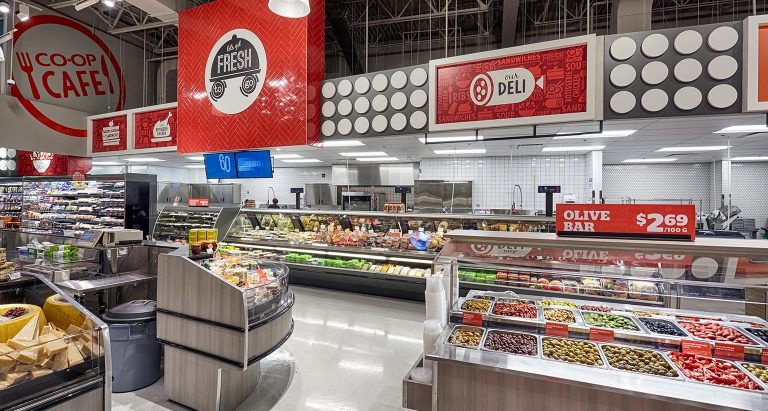Now more than ever, foodservice providers need to have a strong differentiated position in order to be seen, understood, and talked about among existing and potential customers. Communication of nutritional claims is both desired and increasingly legally mandated. In how to clarify and communicate effectively, there is much to be learned from the principles of packaging design.
Address consumer concerns
Clearly, shopper health concerns are driving massive change in the food industry. According to Forbes, consumers want healthy foods and are willing to pay for them. It cites Nielsen’s 2015 Global Health & Wellness Survey of more than 30,000 individuals across demographics from Baby Boomers to Gen X, in which 88 percent of those polled indicated a willingness to pay more for healthier foods including “free from” products (no GMO ingredients, artificial colors and flavors, and all natural). In fact, Euromonitor estimates global sales of healthy food products will reach $1 trillion by 2017.
However, consumers are skeptical about product claims says James Russo, SVP Global Consumer Insights at Nielsen, who tells Forbes: “The claim has to be credible. A food high in sodium that promotes itself as rich in whole grains won’t work. Consumers are very savvy.”
Communicating credible health claims on food is more important than ever but the survey also found that consumers have an unabated aspirational desire for flavor; in other words, they want both healthy and indulgent. Whether online, on-shelf, dining in or out, customers need and desire information but they also want the promise of a great food experience.
Changing notions of healthy eating in restaurants
Concerns for healthy eating do not stop at packaged goods. Todays consumers expect to find great tasting and healthy offerings in restaurants as well. QSR magazine reports that Millennials eat out more than their parents, most often at fast-casual restaurants. Referencing a report by Morgan Stanley, QSR states that Millennials define “healthy food as fresh, less processed, and containing fewer artificial ingredients.”
Bonnie Riggs, restaurant industry analyst at research firm The NPD Group, tells QSR: “Consumers report healthy as the No. 1 characteristic they want to see more of on restaurant menus, and what they mean by that is they’re looking for food that’s real.
Clearly once restaurant owners have made the commitment to providing healthier food options, the challenge then becomes how to make that noticeable to restaurant patrons in ways that do not detract from stimulating appetite appeal. There’s a lot to be learned from core package design principles.
Visibility
Shoppers of packaged goods scan offerings and make decisions quickly, based on emotion (appetite appeal). On pack, key nutritional claims are rational supporting communications. While these health claims are important, these secondary communications often exist to remove reasons not to buy.
In the realm of foodservice, customers are similarly driven by appetite appeal first. Unique features and benefits may provide secondary reasons for trial but they must support the promise of your core brand. To be seen, and to be seen as authentic, the answer is not to shout over every other piece of communication with the latest healthy eating trends, but rather to have an integrated and focused brand proposition that addresses both emotional and rational purchase triggers.
We helped Calgary Co-op accomplish this strategy by following our ThinkBlink process where we identified areas of opportunity to effectively communicate its new brand personality along with its fresh and quality attributes through bright, colorful, and fun signage and fixtures.

Image Source: SLD
Clarify your proposition
As in package design, clear verbal and visual communication must convey product attributes and healthy benefits, and it must be steeped in the visual vocabulary of your core diners. Beyond where they eat, where do they shop? What music do they listen to? What media are they influenced by? Does the demographic vary by country, region or daypart? Are they active on social media or enabled on mobile devices? The answer to all of these questions can dramatically influence the tone and manner and the timing of your messaging.
Define your features
Gluten-free or non-GMO are functional claims that will provoke interest among many customers, but clearly explaining the benefits of these features in-house will go a long way to demonstrating authority and growing your customer base. What specific nutritional claims matter to your target consumers and how can you use disruptive visual messages to connect instantly, both educating and entertaining the consumer?
Extoll your brand benefits
What makes you better? Does the quality of your ingredients help consumers realize a healthier diet (or a better life)? Does your brand support the local supplier community or does it support worthwhile community programs? The more clearly you engage diners in your core brand pillars, the closer you will get to determining success.
Design of in-store and online communication, like package design, must use all elements of design language: shape, texture, color, typography and visual imagery to amplify the benefit to your defined customers. Great photography and/or illustration that is consistent with the emotional delivery of your brand is the most effective way of building appetite appeal. As we have learned from package design, less is more and a simple emotionally engaging photograph can say “a thousand words.”
Amplify quality perception to enhance trust
From a functional standpoint, ensure transparency in every nutritional claim. If you are making an organic, vegan or gluten-free claim, use the most trusted local certifications. If you serve sustainable, wild-caught fish options, use appropriate logos of certifying bodies.
Also use social media to direct consumers to your website for demonstration of your brand’s commitment to regulated environmental or health claims. Just like package design, your immediate communication to consumers must be emotional and appeal to hunger. Save detailed, technical communications for the data hungry.
Summing up, when communicating the health benefits of food offerings in packaged goods or fast-casual restaurants, think like the consumer – “What matters to me? Will it taste good? Is it safe for me to eat? Can I trust you?”


